A few years ago, most people didn’t know what an XLR mic was. Today, with everyone podcasting, the popularity of XLR mics is exploding. What was once the domain of audio engineers has become the number one accessory for content creators everywhere. This is why it is increasingly difficult to stand out in a market where most new products look the same.
Between Logitech’s Blue Sona. This model, designed for streamers, podcasters and content creators, immediately catches the eye with its rectangular construction. It also differentiates itself with an internal anti-shock system and a new capsule orientation designed to reduce unwanted background noise that could disturb your viewers or listeners.
The Blue Sona does things a little differently than its more dominant competitors in the XLR mic market.

Logitech Blue Sona Microphone – Best prices:
 Amazon Marketplace
Amazon Marketplace344.00
 Rakuten
Rakuten344.00
 Amazon
Amazon345.06
Technical characteristics
- Type of microphone: XLR
- Sound recording model: super-cardioid
- Frequency range: 40Hz-18kHz
- Power Requirements: 24V or 48V
- Sensitivity: 20.97mV/Pa @ 1kHz
- Accessories included: additional windscreen, 3/8 inch microphone stand adapter
- Shock mounts: internal
- Dimensions and weight: 165mm (H) x 67mm (W) x 185mm (W), 615g
- Colors: White black
Design and features
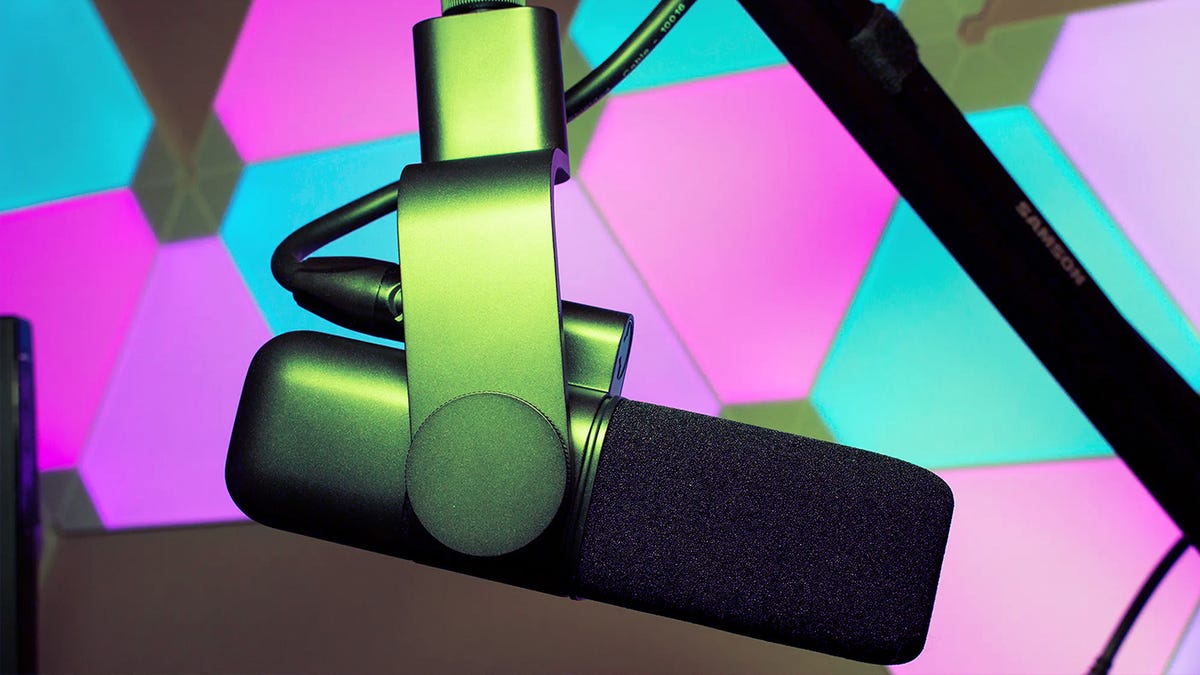
Image: Michael Gariffo/ZDNET.
Logitech’s Blue Sona has a style of its own. Most XLR mics come in the form of cylinders of various sizes, such as the Procaster XLR from Rode or the Procast XLR from HyperX. Logitech goes against the grain by producing a rectangular device with softened curves.
The pop filter, which has magnetic connectors at its base to hold it in place, can adopt different colored poppers to give the device a more unique look.
The practicality of this design is also evident. Since the Blue Sona uses an internal shock mount, it does not connect to the stands via the usual XLR pickup system. Its mounting system makes it both more flexible and easier to use than many competing solutions.
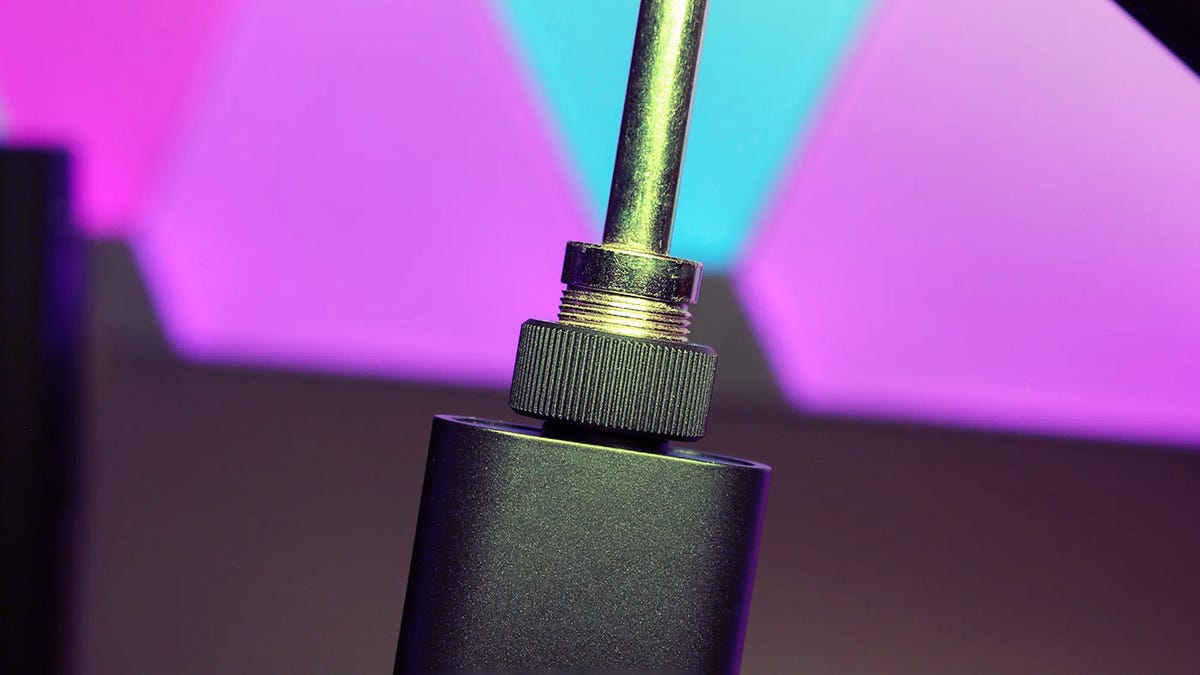
Image: Michael Gariffo/ZDNET.
Most shock mounts require you to rotate the entire microphone assembly when attaching them to a rigid arm like the one seen here. Logitech’s stand avoids this by including a rotating ring attached to the mic.
The threaded ring at the top, for example, allows you to easily screw it onto boom arms. The microphone itself can be positioned either hanging from an arm or standing on a stand, thanks to a button that locks it at the desired degree of inclination.
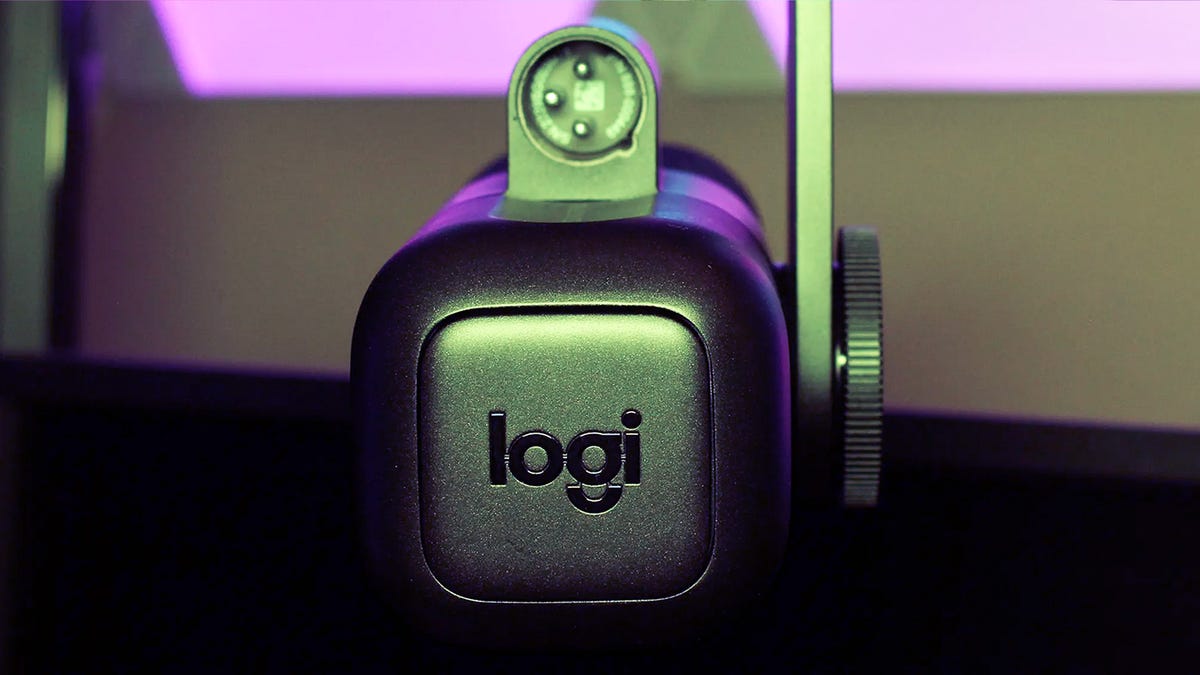
Image: Michael Gariffo/ZDNET.
For the aesthetics of the microphone itself, Logitech has gone so far as to conceal the device’s controls under an ingenious little magnetic cover that can be removed to access the switches below.
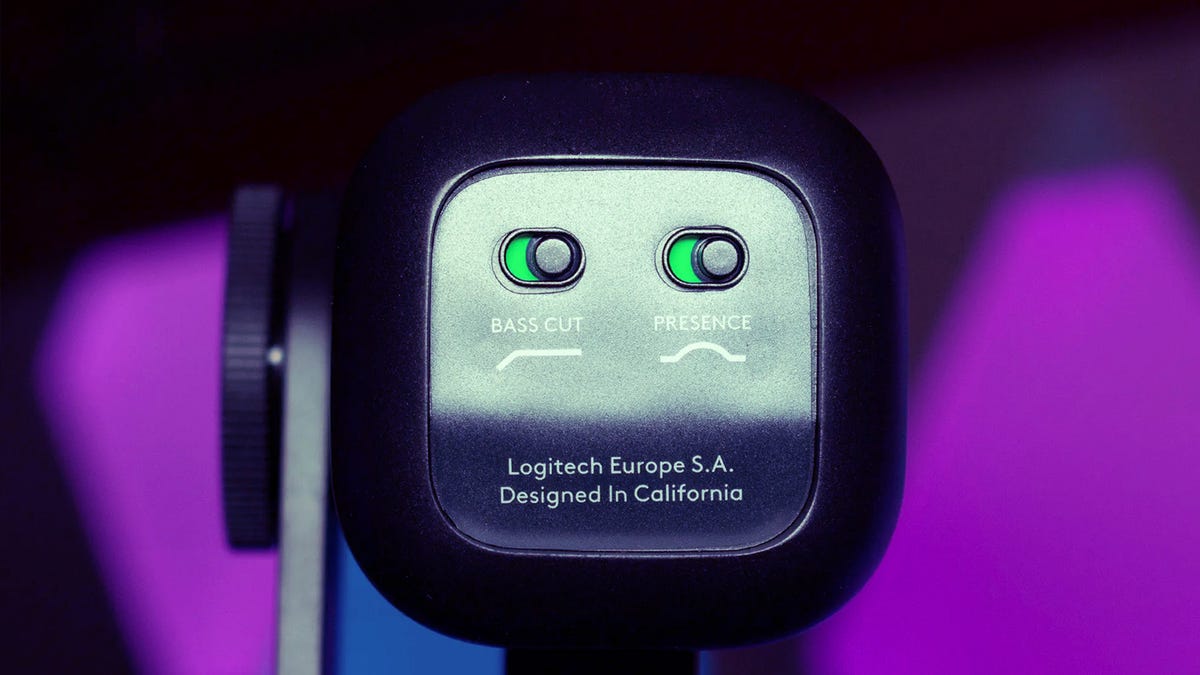
Image: Michael Gariffo/ZDNET.
Under this cap you will find a Bass Cut switch (also known as a high pass filter) and a Presence switch. The Bass Cut switch attempts to block out low-frequency sounds like annoying vibrations from the mounting arm or unwanted hum. The Presence switch, on the other hand, helps make your voice stand out in noisier environments by trying to pick up you and only you in ambient noise.
During my tests, I could see how the Blue Sona was an attractive and practical device. Logitech has succeeded on both fronts.
sound quality
The test above was performed using OBS Studio software and a relatively inexpensive mixer. The Blue Sona’s ability to operate with either 24 or 48 volt power means it should work well with any interface or mixer, even the cheapest ones.
It is also easy to adjust the microphone gain. I was surprised in my tests how quickly the microphone can go up in the towers. Keep an eye on your levels while recording and you’ll be fine though.
I found the Blue Sona’s audio quality to be clear, precise and generally quite raw, but it lacks the added smoothness added by a model like the USB-powered Rode XDM-100. You get with Logitech’s accessory a no-frills rendering.
Some people may prefer this raw rendering, while others may miss the softer character that an enveloping sound can provide. This is ultimately a matter of personal preference.
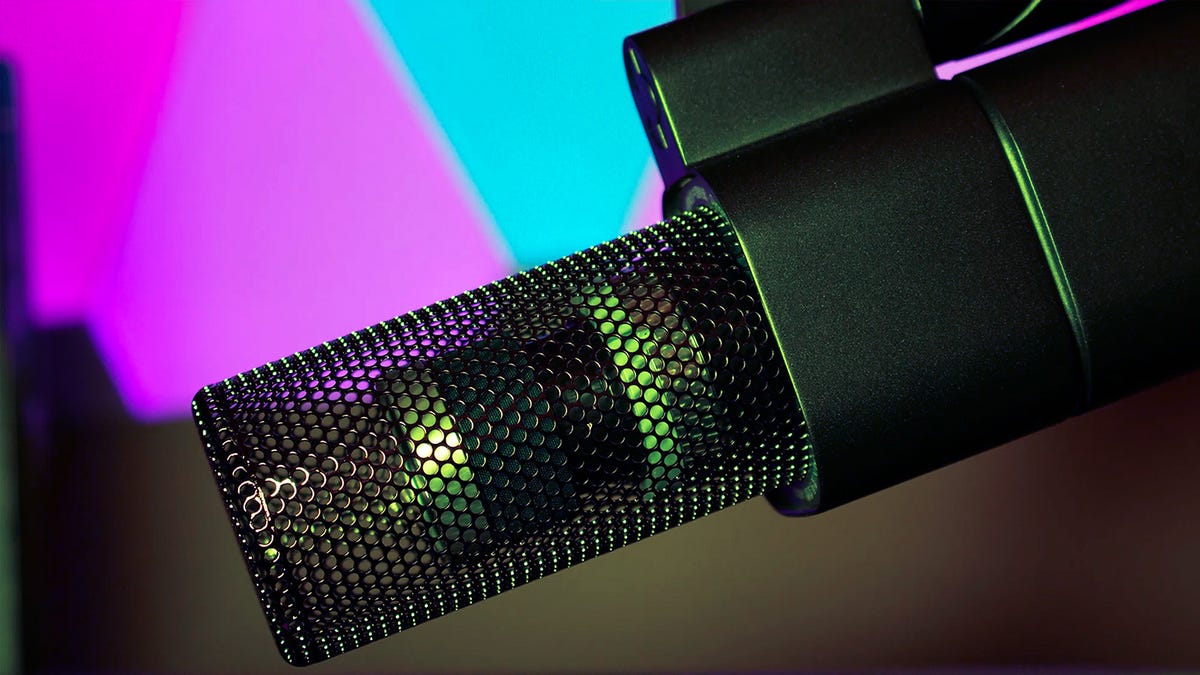
Image: Michael Gariffo/ZDNET.
As a mic designed in part for streamers, the Blue Sona incorporates multiple options to combat background noise. Whether it’s a particularly noisy mechanical keyboard, buttons, piercing mouse noises or ambient vibrations, the Blue Sona tries to block them directly at the hardware level. This is possible thanks to its unique dual-diaphragm configuration, with one diaphragm directed towards you to capture your voice while the other is reversed to help filter out sounds coming from other directions.
I wouldn’t say the Blue Sona cancels out all ambient noise, but I found its ability to attenuate sounds like keyboard and mouse noise quite impressive, especially without software assistance. I was also impressed with its ability to do this without “clipping” the audio or interfering with the voice of the person behind it.
The internal shock mount also does a respectable job of eliminating unintended vibrations. You can definitely hear me banging on my desk in the video above, but the weird hum you usually hear when a mic vibrates is missing.
Conclusion
Logitech’s Blue Sona mic is not a cheap model. It is even squarely in the category of microphones for professionals. For this reason, I suggest you consider a few criteria before getting one. First off, I recommend this model primarily to people who expect their mic to be visible. If you’re recording an audio podcast, there are cheaper options that do the job just as well. Buying such a stylish mic and never showing it to anyone wouldn’t do much good.
This model is clearly designed for streamers. Whether you’re just chatting or a hardcore gamer, this mic will get noticed. Its compact shape won’t take up your entire frame either, and the noise-isolating features could dramatically improve rendering clarity. After all, no one will care about your headshot percentage if they can’t watch your stream because of the incessant clicking.
For those who create video content and are style conscious, the Blue Sona is a great option that will make your sound and image stand out.
Alternatives
The Rode Procaster is a pickup with a slightly warmer sound and a more go-anywhere style. If your mic won’t be seen much and you don’t need noise-canceling technology, you can save a little money by opting for this model with similar audio quality.
Speaking of mics meant to be seen, the Quadcast S is an RGB light show AND a solid microphone. It’s smaller so it won’t clutter your frame, but it uses a USB cable instead of an XLR cable.
Sometimes the most popular option is for a reason. Everyone from top YouTubers like Marques Brownlee to big-name podcasters like Joe Rogan use the Shure SM7B. It’s only slightly more expensive than Logitech’s option, but a little less unique.
Source: ZDNet.com
